Your cart is currently empty!
CE Certificates
The importance of CE certificates
Would you put your life at risk for a couple of hundred Euro difference? Would you buy a car lift in the same store you buy your toilet paper? I wouldn’t for sure…
Conformité Européenne (CE) certification is a regulatory standard that verifies certain products are safe for sale and use in the European Economic Area (EEA). Manufacturers place a CE marking on certified products to indicate that the product complies with European safety rules and can be traded freely within the EEA. Unlike other certification marks, CE marking is not granted by a particular regulatory body, although certain products require an independent conformity assessment by a notified body to ensure they meet CE certification requirements. Ultimately, manufacturers are responsible for the proper use of CE marking on their products.
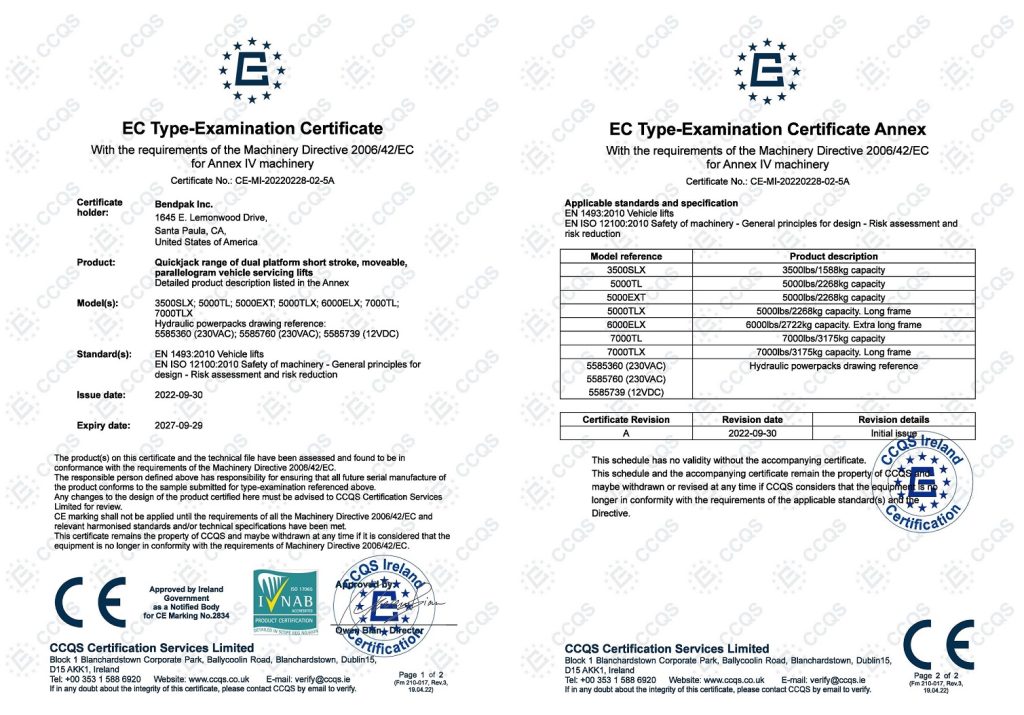
There are two ways to have a product verified for EU sales, one of them is a declaration of conformity and one of them is a CE certification.
The declaration is a simple document any reseller or manufacturer can write down. It will say ”I declare my product complies with these standards”. The CE certification is quite different. A third party (called ”Notified Body”) will examine your product. There are a hand full of notified bodies in Europe and they all have been approved by the European union to do examinations. This process takes a long time, costs a lot of money, but is a very solid way to find out your product complies with certain regulations or not.
QuickJack is certified by a notified body and complies with all necessary standards to vehicle lifts, which is therefore not only allowed to be sold in Europe, but also determined to be a safe product in this category.
Now, lets talk about the self certification. In reality, a lot of products don’t comply the European standards. The manufacturer just writes the declaration and keeps their fingers crossed nothing happens.
For example, there are a couple of companies in Europe, who sell a copy of the QuickJack lift. Despite the poor design and bad quality welds, they all have the declaration of conformity. You know why? Because they won’t pass a CE Certification for sure.
This copy comes from Sweden, would you trust to lay down under this lift? Would you put your life at risk for a couple hundred euro difference?
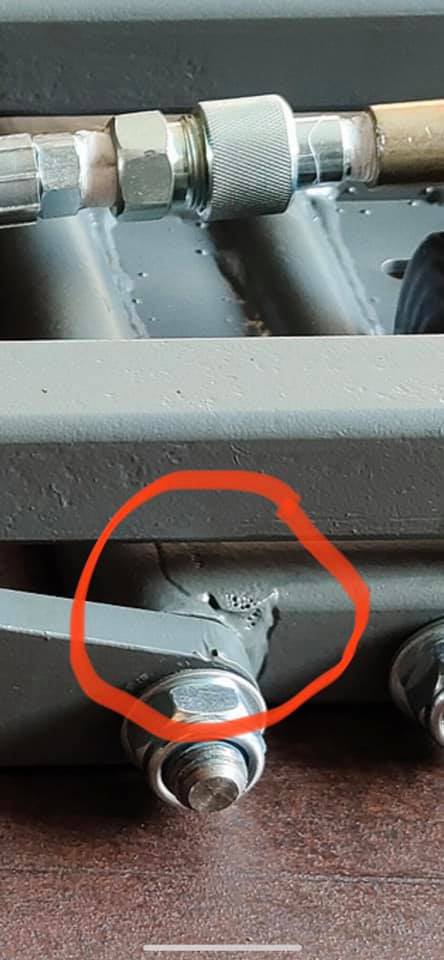
Dear copy makers – here is some free advice:
Your locking bar does not have a side guard. Which means, the lock can slide out from the side.
Your rail is not supported by the floor. Which means, over time, those tiny welds will eventually crack which might cause a deathly accident.
Your self certiciation you have written, is not valid, you do not comply with European standards.
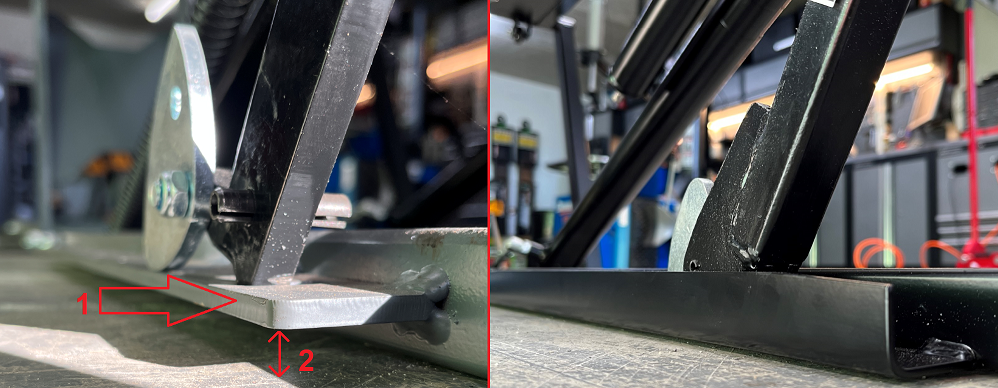
Also, in high school we learn about interconnected vessels. But maybe this engineer skipped that class, this lift copy has a Y-connector to both frames, which result in unequal lifting, as the heaviest side of the vehicle will stay on the ground for sure.
A hydraulic lift with separate frames will always need a special hydraulic component to equally divide the hydraulic flow to each frame, causing equal lifting, despite any weight difference.
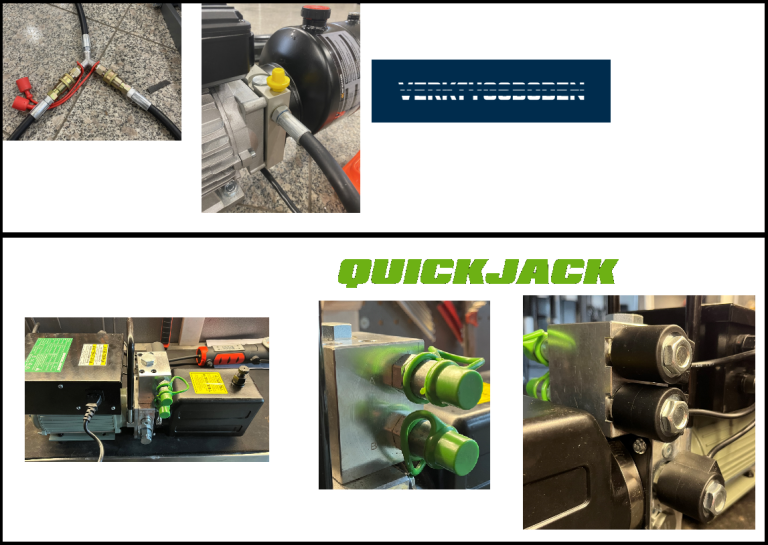
Saving production costs on the most important part of a lift, the safety lock.
Great job (sarcasm).
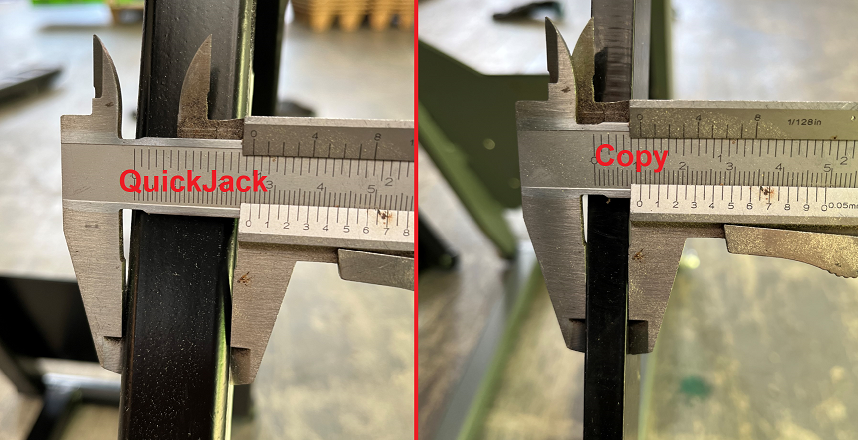
Long story short, if this company offers their product to a notified body for the CE Certification, it will not pass at all. Would you buy it?